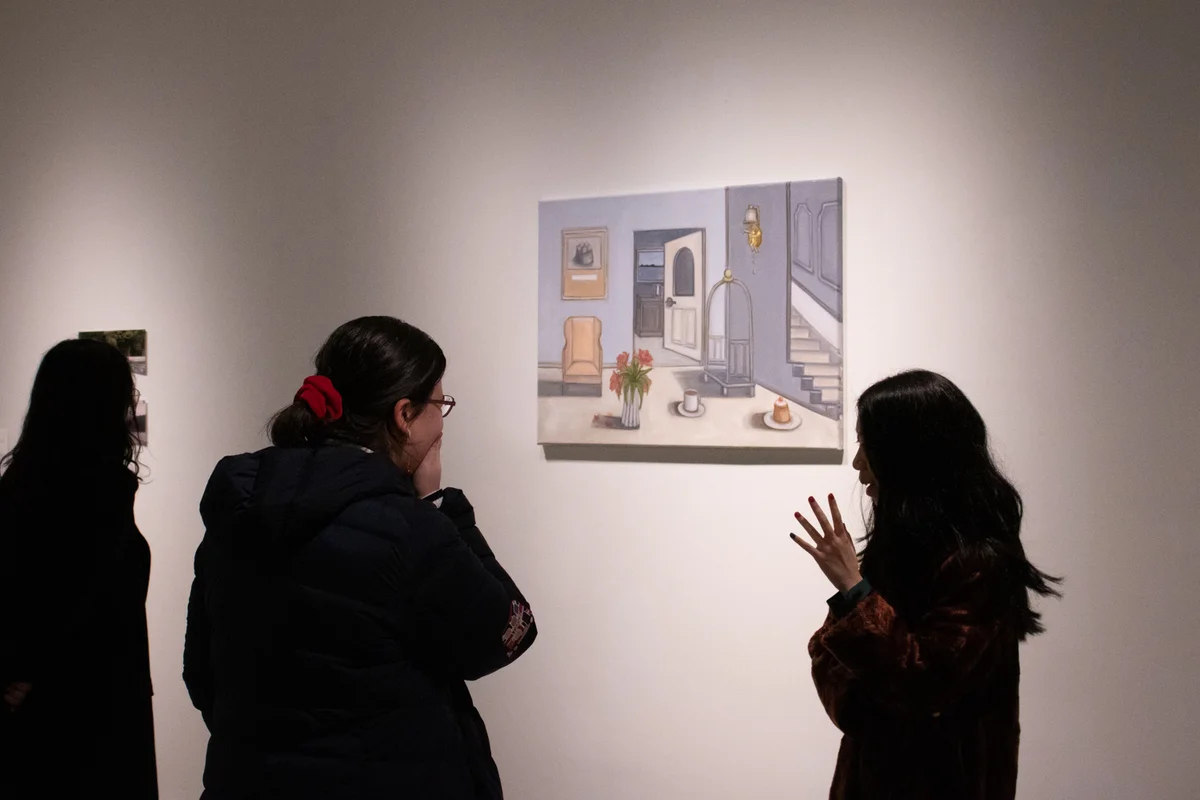
On the evening of February 4, the UBC Visual Arts Student Association (VASA) opened its annual undergraduate exhibition, What Do We Know?, with an event inviting artists and attendees to speak at the Hatch Art Gallery.
The exhibit expresses what artists in the community claim to know about others, places and themselves. The show does not present a definition of knowledge but rather engages a sense of curiosity and collaborative learning.
While this goal of community learning may be more successful in sharing what pieces of information from individual artists, the presentation of the exhibition as a question for visitors to write what they know nudges visitors to take the art further than pure aesthetics without forcing deeper interpretations. Visitors are asked to consider what facts they consider concrete and which opinions they hold.
Lead curator and VASA president Anneke Dresselhuis spoke to the group about the exhibition.
“The works in this show draw from and engage in various explorations of knowledge as an emancipatory process of learning, sharing and making across individual, community and larger societal registers,” said Dresselhuis. They highlighted the practice of asking ourselves what we know and the impacts of our knowledge on communities.
Organizers invited attendees to sit in circles on the floor in groups for discussion of the works.
“Art is a form of presenting knowledge,” said Gabriella Williams, VASA event coordinator, in our discussion group. “We get these little snippets. Even though you get a small snippet into someone else’s life, you can reflect on how that relates to your own life.”
One highlight of the exhibition was Jasmina Simsone’s work Lietuvēns (2022), a set of three paintings with synthetic flowers hung from each canvas. Each canvas depicts a skeletal dancing figure called a lietuvēns, a creature from Latvian folklore, contrasting against dark vivid blues and reds. According to the artist statement, the contrast aimed to highlight the differences between post-Soviet states’ reputations for drab deprivation and the flourishing spirit of Latvian culture.
Other works focused on finding knowledge through introspection, including the painting IN DREAMS, I AM PART OF THE HOTEL (2022) by Riko Tanaka. The work depicts a living area with items set on the floor, stairs leading to an unknown space at the edge of the canvas, and a slightly skewed perspective that collectively make an otherwise normal environment appear surreal.
In the discussion portion of the event, exhibition catalogue writer Maria Vozdvizhenskaya shared that Tanaka tried to make the hotel rooms she stayed in neutral and clean spaces while traveling during the pandemic. The work reflects a sense of comfort and disconnect to bring peace to an active mind.
Other exhibited works represent more political opinions, such as Jules Church’s Don’t Forget to Take Your Meds (2022). The sculpture consists of two bowls of pills, one floating in a soup of cigarette butts and ash, beneath a string of cheerful lights. Above the bowls, a small mirror confronts viewers with their own reflections. According to the exhibition’s catalogue, the work aims to call attention to psychiatric medication and the pharmaceutical industry, while highlighting the daily experience of managing mental illness through medication.
It successfully calls our society’s increasing reliance on medication into question while representing an intimate personal experience. Yet, the arrangement of the work as an “altar” (per the accompanying statement by Maggie Wong) has the potential to suggest shame on viewers by suggesting that their faith and reliance on medication reflects their failures to be good people who don't need psychiatric substances to live a normal life by suggesting that their faith and reliance on medication reflects their failures to be good people who don't need psychiatric substances to live a normal life. As a person on antidepressants, this work made me uncomfortable, and not in a way that I could learn from. I felt that the artist was suggesting that a tool that has improved my opportunities in life was dirty or corrupting.
The exhibition overall may not offer a comprehensive definition of knowledge, but it demonstrates processes of sharing information — whether derived from personal experience, academic knowledge or cultural memory. How the viewer should interpret and question this information is left open.
“To ask what do we know,” said Dresselhuis, “is to posture ourselves in humility to recognize the vastness of what we don’t know.”
What Do We Know? is open through February 17 at the Hatch Art Gallery. Admission is free.

